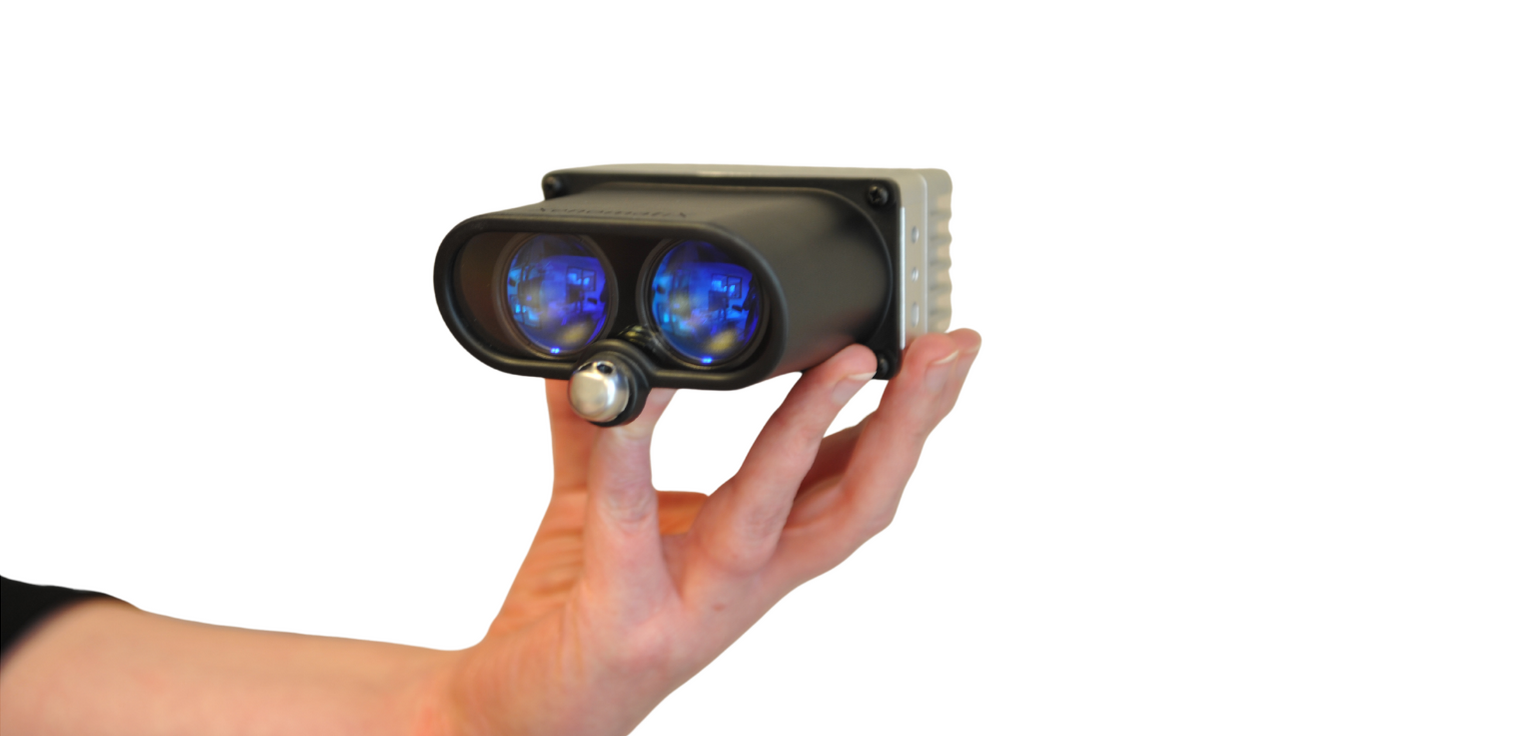XenomatiX, the pioneers of solid state multi-beam lidar, have announced two new lidar modules to its existing portfolio of lidar. The XenoLidar Xpert and Xact modules represent a bold leap towards the integration of lidar systems onto production vehicles and other applications; bringing technology that was once visionary into the current market.
“To me, true solid state lidar is like Bigfoot – something that everyone is talking about, but no one has ever seen. And now we have a true solid state lidar that’s available – it’s for sale – you can buy it now, not somewhere in the future.”
Filip Guens, XenomatiX CEO
True Solid State lidar’s advantages
XenomatiX, founded in Belgium in 2012, are credited as the first company to offer a “true solid state lidar” – lidar that transmits multiple simultaneous laser beams for scanning, and uses no moving parts to do so. Instead, it uses a multi-beam laser projector that generates a high resolution grid of measurement points.
This solid state system is ideal for scanning while in motion because it removes lag time caused by scanning sensors as they move through their scanning pattern. The simultaneous approach in solid state lidar is well-suited for automotive applications because it eliminates the need to compensate for motion, says Geuens.
“The motion aspect is really a strength of our lidar. As a multi-beam lidar, all the beams are sent out at exactly the same time – whereas a scanning lidar measures sequentially, meaning that you have to compensate for the movement of the vehicle in between measurement points. We get all of the points at the same time via a global shutter.”
The XenoLidar system produces both a 3D point cloud as well as a 2D camera image, and has been designed to also work as a detector in a two-dimensional mode when the laser is off. If the laser is switched on, the system can use the same pixels to do three-dimensional measurements and generate the 3D point cloud.
“So as a result, the lidar gives out a 2D image and a 3D image with perfect overlay – which is like the ‘Holy Grail’ of sensor fusion.”
XenoLidar Xpert and Xact
The new standalone lidars, announced today, join their existing portfolio of solid state lidars for automotive and industrial applications. The new lidar module comes as a package with a controller and cabling and contains the software needed to operate it so it can be integrated into other systems.
The new Xenolidar was developed in parallel to the existing partnerships that Xenolidar has been pursuing with Tier 1 automotive suppliers, says Geuens.
“We have been focused on making the lidar module as compact as possible, and while at the same time working with Tier 1 partners on integration aspects – what is the influence of a windshield, how do we do thermal management, how do we package it, how do we do data processing, etc.”
As a step up from their previous modules, the new Xenolidar X modules now offer a 3-fold increase in the number of beams – increasing from 5,000 to 15,000- in addition to the unit being two and a half times smaller, with power consumption cut in half.
Xact has a field of view of 60°x20° and a resolution of 0,3°. Xpert has a field of view of 30°x10° and a resolution of 0,15°. Both of the two models are small – 10cm x 5cm x 11cm, and multiple modules can be combined to create the coverage required for a given application.
While designed to meet the needs of automotive companies (e.g., ease of integration, small size, etc.), XenomatiX does recognize the potential for use in other verticals, says Geuens.
“We are going to be focusing on anything that is on wheels – mainly the automotive market, also off-road markets, agriculture, warehouse, automation.”
The Xpert and Xact XenoLidars will be showcased in an announcement event featuring a demonstration, additional technical information and case studies – watch the launch webinar here.
Impact on the automotive lidar market
Though several other lidar companies have now followed XenomatiX’s lead in developing solid state sensors, Geuens sees it as a nod to XenomatiX’s trailblazing rather than a threat.
“We see that some companies are trying to implement this technology as well – and we see that as a recognition of a validity of our approach.”
While the race to be the top lidar company has intensified, with new players joining the market, many are still iterating upon the original scanning lidar technologies and trying to incrementally improve performance. What solid state lidar may do is to provide a disruptive alternative, allowing innovation to make the next leap forward, says Geuens.
“In 2012 we looked at the lidar market with different eyes – we said, how can we make Lidar automotive grade? And that lead us to inventing multi-beam, and we believe that is true innovation. It is not the incremental improvement to the candle that led to the invention of the light bulb.”






